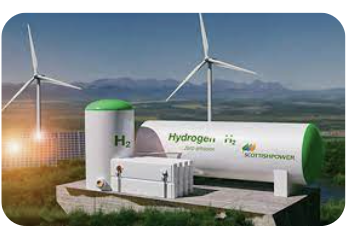Ethanol plants, wind and solar farms, battery cars: all have their corporate and political beneficiaries, but let’s not forget that other boondoggle, “Green Hydrogen”
European energy expert Samuel Furfari sums up green hydrogen (GH) perfectly; “It’s like burning Louis Vuitton handbags for heat.” He says this because it is so very expensive. Federal law allocated $9.5 billion for GH hubs, and the Orwellian-named Inflation Reduction Act (Inflation Causing Act) expanded tax subsidies. Even with massive taxpayer subsidies, GH is a money loser.
Leftists claim GH is a way to replace batteries for transportation. It is at least five times more expensive, which doesn’t include all the extra costs associated with the production of natural gas, such as purifying massive amounts of water, which takes about 13 times more water than the hydrogen it produces. Desalination is an additional cost. Putting these processes anywhere they’ll need to compete for water resources is just plain stupid.
Infrastructure costs are astounding because we currently have none, and hydrogen is not suitable for pipelines because it escapes easily, embrittles metal, and is prone to explode. It only takes a few massive hydrogen car or truck explosions to end hydrogen use for transportation, just like the Hindenburg disaster that ended hydrogen ballon travel.
GH is an excessive waste of money, and it hasn’t ever been made at scale—even after tens of billions spent by Europeans, Australians, and the United States.
All it takes is a little critical thinking to realize that something is amiss once one understands how GH is produced. First of all, we don’t have enough wind and solar to power the hydrogen plants. Second, wind and solar are part-time and weather dependent. The GH process is required to run at all times, not just the 30 percent of the time the wind blows and the 20 percent of the time the sun shines bright enough.
Making GH requires pure water to be heated to 2,000° F and is then electrocuted. This cracks the hydrogen and oxygen molecules. The hydrogen is then chilled to 420° F below zero, turning it into a liquid, and then it is finally compressed to 10,000 psi, comparable to three times the average scuba tank or compressed natural gas (CNG). Without this chilling and compression, hydrogen has one-tenth the energy per volume as natural gas. Under normal compressed circumstances, hydrogen has less energy than CNG. A kilogram of this liquid hydrogen has the energy of a gallon of gas.
When working with the liquid near zero, compressed hydrogen is tricky, as it is the smallest molecule, escaping normal pipelines and embrittling metals, causing them to crack sooner than later.
"Every time you involve hydrogen, you get not small losses, but large, substantial losses," an energy specialist tells us. “The main cause of the issue is that hydrogen is a molecule that is too small and volatile to be used, transported effectively using the gas pipelines, turbines, boilers, cooktops, or burner jets that are now in place.” Deep pocket oil companies are getting out of this boondoggle. BP cancelled 18 hydrogen projects because they were unprofitable, all in an effort to save $200 million a year. Shell cancelled a Norway hydrogen project and others for lack of demand, while a $750 million GH plant in Australia was cancelled because it was a money loser.
….
And what about water needs?
It's just stupid to put hydrogen hubs in areas without enough water. Houston, Utah, and Southern California, to name a few, are recognized as government sponsored GH hotspots.
Particularly in Utah, on the edge of the desert, where solar and wind power barely account for 2 percent of total electricity generated. Or California, which suffers from droughts, and often sees water shortages.
…. While it was reported that Trump is considering killing hydrogen hubs in blue states, Trump should kill all of them.













